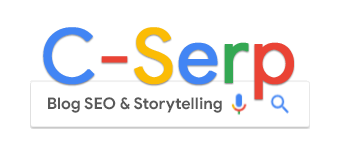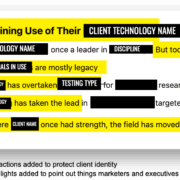LLM perception match: The hurdle before fanout and why it matters

Before an LLM matches your brand to a query, it builds a persistent perception of who you are, what you offer, and how well you fit the user’s need.
If you’re not perceived as the right match, your brand is quietly filtered out – before fanout, before relevance, before you even enter the race.
This is what I call LLM perception match (LPM) – the new eligibility filter for AI visibility. And it’s already happening inside ChatGPT and, likely, other LLMs.
If your perceived fit doesn’t align with the query’s intent, your content, links, and authority will not matter, and you will not be considered.
What is LLM perception match?
LLM perception match is how language models determine whether your brand even qualifies to be considered for a recommendation before relevance or content matching happens.
They form this judgment from everything they can crawl:
- Your site.
- Reviews
- Forums.
- Analyst reports.
- Competitor comparisons.
- And more.
This perception is persistent and synthesized. If it doesn’t align with the user’s intent, persona, or expectations, your brand is excluded before fanout ever begins.
Simply put, LLM perception match is the gatekeeper. Without it, content quality and SEO don’t matter – you won’t even be in the running.
In every AI visibility audit I’ve done, one pattern is clear: LLM perception match decides whether your brand is in the conversation or invisible.
Dig deeper: AI visibility: An execution problem in the making
LLM perception match vs. fanout
After ingesting and synthesizing everything it can find about your brand, products, services, and technology, an LLM forms a perception of:
- Who you are.
- What you offer.
- Who you’re a fit for.
This is your LLM perception match. The LLM determines whether your brand is a match based on what it perceives.
In contrast, fanout is a technique where a single user query is expanded into multiple related subqueries to gather a broader range of information and deliver a more comprehensive answer.
The marketing goal is to be relevant to as many of these subqueries as possible.
In my AI visibility audits, I’m seeing that if the LLM’s perception of your brand doesn’t align with what it determines the user needs, your brand is filtered out, no matter how well optimized your content is.
Perception trumps relevance. Without a strong LLM perception match, your brand won’t even be considered, even if your content is technically relevant.
This is the critical shift in AI visibility.
LLM perception match acts as the eligibility filter before relevance matching in fanout. If there’s no perception match, you won’t be considered.
Notes:
- Whether LPM filtering happens before or as part of fanout doesn’t change the reality. A poor LLM perception match will block your brand from being considered for recommendation.
- Google introduced the concept of query fan-out for Gemini, but it’s not unique to Google. Other LLMs are likely doing the same.
Why LLM perception match matters for B2B
Companies with complex B2B sales cycles – million-dollar machines, six-figure software, and high-stakes services – are especially exposed.
These purchases require extensive due diligence, and AI systems can quickly consolidate all the research that took months to do before.
Thus, LLMs can quietly shape early consideration long before a prospect ever talks to your sales team.
ChatGPT, in particular, now functions like a personal procurement advisor.
It instantly generates comparison tables on pricing, buyer remorse, implementation complexity, and feature differences – information that used to require multiple vendor calls and your own conclusions is now curated and consolidated in seconds.
To every CEO, CMO, and COO’s horror, buyers can now ask LLMs detailed questions about your product and technology, only to be told exactly why it may not be the right choice.
Few executives will be happy about what LLMs really have to say. (You’ll see examples below.)
Dig deeper: Optimizing LLMs for B2B SEO: An overview
Visibility gaps may be an operational problem
In many cases, brands and SEO teams will mistakenly assume they have a “relevance” or “fanout” issue when they aren’t being recommended. They’ll be chasing their tail in these cases.
In reality, the LLM may simply not perceive your brand as a good fit. That’s LLM perception match at work – determining whether you’re eligible for recommendation before content relevance even comes into play.
Here’s the kicker – perception is about your company as a whole, not just the content on your pages.
We’ve seen a wide range of factors negatively affect LLM perception match, including:
- Difficult return policies.
- Technology perceived as outdated.
- Website UX (e.g., images too close together).
- Low-quality materials in product construction.
- Clunky or confusing software interfaces.
- Formerly innovative tech, now perceived as lagging.
These factors extend beyond what any SEO team can control.
This is why LLM perception match is the first hurdle in AI visibility.
Ignoring it will quietly erode discoverability and pipeline, especially for B2B brands where trust and fit drive sales cycles.
Fixing it can take many months, and in many situations it will take years.
Let’s look at a few examples from my audits that will take months to years to address.
Examples from AI visibility audits
Here’s what I’ve seen in real AI visibility audits across different industries.
Example 1: Once a technology leader, but the field moved on
ChatGPT described a client’s technology as “once a leader” but highlighted that the field had “moved on.”

Example 2: Integration friction
ChatGPT noted this product worked well within its own ecosystem but the LLM perception is that it creates headaches when connecting to other platforms.
For buyers with hybrid tech stacks, this LLM perception will cause the product to be filtered out early, or given a lower recommendation with caveats, despite strong SEO rankings and AI Overview recognition.

Example 3: Return policy friction
ChatGPT and other LLMs described a retailer’s return policies as restrictive and inconsistently enforced, triggering a low LLM perception match.
They were completely out of the running because the LLM’s bias was to recommend companies with positive customer experiences.

Example 4: Transaction friction
LLMs flagged transaction challenges – shipping delays, unclear returns, disputes – leading them to steer buyers toward in-store options, despite strong SEO rankings.
ChatGPT actually said, “If you still want to proceed… Order in-store if possible — you’ll likely experience fewer surprises.”

Example 5: Innovation leader, but harder to adopt
A client was seen as innovative, but competitors were more appealing for “broader compatibility” and “more intuitive interfaces.”
The LLM would recommend competitors for queries, prioritizing ease of use and broader compatibility with their diverse tech stack.

Example 6: Perceived as overkill for entry buyers
ChatGPT noted this client’s suite felt like “overkill” for organizations wanting to get started with a particular technology, framing it as too complex for practical needs.
This perception limited consideration in early-stage buyer queries despite strong product capabilities.

ChatGPT is your test bed
ChatGPT is your clearest test bed for understanding LLM perceptions of your brand. It surfaces issues candidly, often in ways that catch CEOs, COOs, and CMOs off guard.
The key is to be thorough and methodical, testing across:
- Entities – structured concepts about your products, services, and customer use cases, not just keywords.
- All relevant LLMs.
The first step in AI visibility is building out these entities, which is the AI-era equivalent of keyword research.
Note: You’ll notice I call out COOs in this article. That’s intentional.
Many of the AI visibility issues I see trace back to operational breakdowns that cause LLMs to form the wrong – or weak – perceptions of your brand. COOs need to hear this.
Where LLM perceptions are headed
Expect the LLM perception match to expand across Gemini, Claude, Perplexity, and Copilot.
If they haven’t surfaced these perceptions yet, it’s likely due to legal caution or ad model priorities.
In my view, ChatGPT’s unfiltered candor is a preview of where LLMs are headed.
If not all, the ones that do move this direction will become the models users trust most for the research phase of the buyer journey.
What it takes to manage LLM perceptions
AI visibility issues often stem from years of inconsistent positioning across distributors, press, analysts, user comments, and legacy content.
As we have seen, the SEO team’s content optimizations alone can’t override entrenched misperceptions in LLM systems.
Managing how LLMs perceive your brand will require:
- Operational changes (returns, fulfillment, product design, support).
- Narrative changes and consistency across owned and unowned digital properties.
- Updating your brand footprint where LLMs crawl – not just your site.
- Monitoring how LLMs describe your brand and products.
- Internal ownership to maintain and adapt LPM as markets evolve.
Notice the word “manage.”
LLM perception match management isn’t an SEO tweak – it’s an organizational competency most brands have never had to build until now.
Dig deeper: Decoding LLMs: How to be visible in generative AI search results
Why you need to audit LLM perceptions now
Most brands have no idea what LLMs actually believe about them. My clients have been stunned about the things our audits uncover.
The negatives blocking your visibility often aren’t the ones you expect, and they will cause missed opportunities before your funnel even begins.
This is why systematically auditing your LLM perception match is critical to staying discoverable in the AI era.
What’s at stake if you ignore LLM perception match
Your AI visibility is at stake if you ignore LLM perception match.
Worse, if you wait to act, you will be spinning your wheels to figure out why you’re not recommended when LLMs are the start of product discovery.
For B2B brands with complex sales cycles, the risk is even higher.
Missed leads (especially for fringe personas and use cases), shrinking pipelines, and competitors capturing early consideration will quietly happen, and it could take 6-24+ months to recover.
Bottom line
The question isn’t whether LLM perception match affects your brand.
It’s whether you’re ready to fix it before your customers – and competitors – see the gaps. Now or later, you will be addressing LLM perception match.
B2B brands with complex sales cycles must operationalize LPM management now or risk losing pipeline to competitors who show up in AI discovery with positive, matching perceptions where it matters most.


